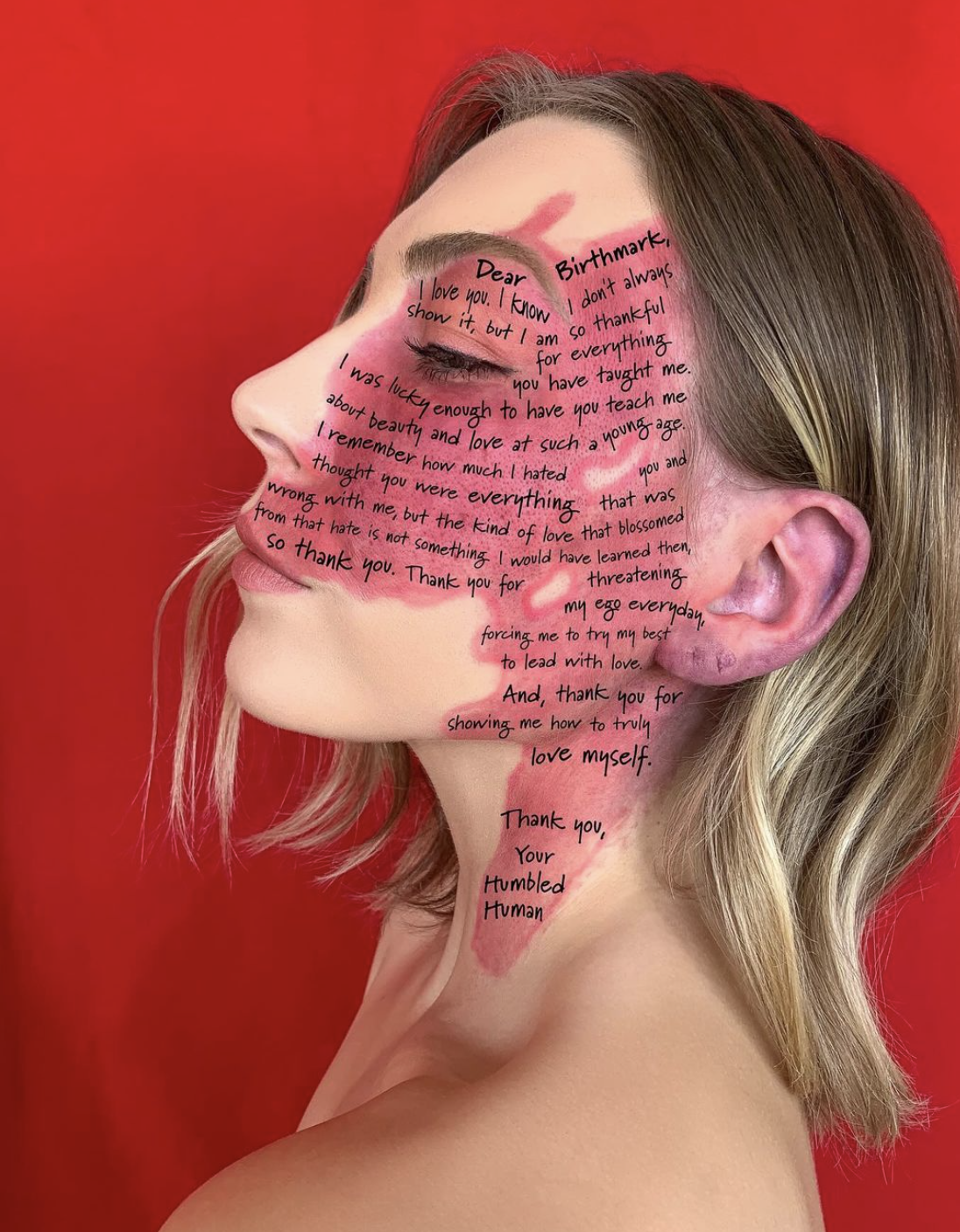Bye bye 2022. Bye bye treating our bodies as trends. Forever.
Just like that another year has flown by. As we reflect on this past year, there’s one topic that we have to address and leave behind as we enter 2023.
And thats treating our bodies as trends and more specifically the dangerous glamourization and rise of the Heroin Chic look.
After years of finally winning the war on unrealistic beauty standards, celebrating curvaceous bodies, plus size models, cellulite, natural beauty, anti-photoshop campaigns and more - we’re back to idolising women that look thin, frail, neglected and malnourished? No thank you.
We’re fed up and here to say once again. your body is not a product. Your body is not a trend.
Our amazing, unique, strong and varied bodies are designed for a purpose - for health, for movement, for hormones, for energy and enable us live optimally healthy and happy lives. But, it can just get so complicated, and exhausting can’t it. Plus, half the time we aren’t even aware of WHY we want the things that we want.
How The ‘perfect Body Type’ Trend Cycle Starts…
Like the classic chicken and the egg dilemma, it’s often hard to know where trends begin. Does a beloved icon of the time cause a media sensation, or do the attitudes of the time, driven by media influence, set the trends for people. While this may be a hard question to answer, what we do know is that it’s the widespread commercialisation and reinforcement across magazines, movies, and television of trends that influence the social and cultural psyche, before we’ve even had the chance to ask “why is this a trend?”.
Now we actually did some digging on how bodies and trends became so intertwined because we wanted answers, and an end to this negative influence once and for all; not so surprisingly, it became clear that this type of trend setting has mostly been instigated by the fashion and entertainment industry that sets the tone for what bodies and ‘looks’ are trendy throughout history, and even now.
For example, in the Golden Age of Hollywood (1930s-1950s), hourglass figures, large breasts and curves were all the rage. Stars like Marylin Monroe and Sophia Loren were celebrated for their real, curvaceous feminine beauty.
Through the late 60’s and into the 70’s is when we started to see “skinny” begin to creep into the trends and beauty standards for body types.
Jumping to the 1980’s when workout videos, bodybuilding and women’s group fitness classes became all the rage, here the Jane Fonda’s and Jamie Lee Curtis’ of the world were looked up to for a still thin, but more athletically toned body, and caused a widespread obsession with exercise.
Then came the 1990’s and the birth of the original and popularised ‘Heroine Chic’, where the glamorised body type for this era was extremely thin, stringy hair, waifish and pale complexion often associated with drug use. Kate Moss was the ultimate poster child of this era, and was supported by many others in the thriving and iconic fashion and supermodel industry of that time.
Many experts including Kerrie Jones, a leading eating disorder psychotherapist and founder of Orri, a Specialist Day Treatment Service for Eating Disorders, are pushing against the attempted return of this “90’s Heroine Chic’ trend specifically.
“Young people in particular can have a very binary view of the world - they can think how they look defines their worth. This isn't the truth, but no matter our age, we can all struggle to see what’s real and what's manipulated” - Dr. Kerrie Jones
A recent study showed that of American elementary school girls who read magazines, 69% say that the pictures influence their concept of the ideal body shape and 47% say the pictures make them want to lose weight.
This can affect generations of people to feel deeply anxious or not good enough in regards to body image, and contribute to another wave of anorexia or bulimia like it did in the 90’s. In order to protect ourselves and others, we HAVE to push back against this now and fundamentally change how we think about fashion and our bodies, and create a positive relationship with it all.
Image source: New York Post
What changed so that we finally started celebrating our natural bodies instead of being ashamed of it?
So now is considered the “Post Modern Beauty’ era (2000s-present) where the tone was very much set by celebrities like Kim Kardashian who in 2006, appearing next to Paris Hilton and in the public eye for the first time, blew us away with the concept that curvaceous women are sexy and desirable too!
Impressionable young girls around the world with curves were over the moon and starting to feel better about themselves that they now had a realistic role model, with a voluptuous and natural looking body, as it seemed much more achievable to look like Kim Kardashian than Kate Moss or Gwyneth Paltrow.
The rise of the body positivity movement and the challenging of unhealthy and unrealistic beauty standards started taking place. Anti-photoshop campaigns like Dove’s Evolution were popularising, and it started becoming unacceptable to participate or encourage any sort of unattainable body standards, promotion of diet culture or spotlighting (and picking apart) celebrities' bodies on newsstands and websites. A huge win for us.
Now we even have celebrities like Jameela Jamil who loudly, proudly and in a very clear and No BS manner, opens up about her own experience with eating disorders, body image issues and the twisted and pressure filled industry of fashion and entertainment, who comments against this ‘Return of the Heroine Chic’ movement by saying “I’m BEGGING you to violently reject this... We worked so hard and made so much progress and we are not being dragged back.”
Celebrities have healthy weight loss transformations all the time. We’ve seen Adele and Rebel Wilson share their journeys of healthy eating, exercise and body love. Christina Aguileria is known for fluctuating between petite to curvy over the years with no one batting an eyelid.
However, when the Kardashian clan started to modify their already beautiful curvaceous bodies, namely starting the trend of BBL’s (and the rest) this spiraled into its own dangerous trend in itself. And now Kim and Khloe Kardashian have ‘cancelled’ the BBL trend, seeing them go from proud and curvy to noticeable skinny is causing a frenzy online as viewers are exhausted (and broke) that the body standards and expectations are changing once again.
Image of Khloe celebrating her 38th birthday from Kim Kardashians Instagram Story showing her tiny frame.
“Bye-bye booty: Heroin chic is back.”
This was the title of a recent article from the New York Post which went viral within hours of it being published. It thankfully received huge backlash when public figures such as Jameela Jamil, large brands, activists, psychologists, influencers and the like, called out this publication for how harmful and distasteful it was to promote this physically and mentally damaging trend.
Remember when Kim Kardashian told us she tried to lose 16 pounds in 3 weeks to fit into her Marilyn Monroe dress at the 2022 Met for all of 10 minutes? She received severe backlash for promoting unsustainable diets and lifestyles, including from Riverdale famed Lili Reinhart, who has been open about her body struggles and shared her disappointment on Instagram:
“So wrong. So fucked on 100s of levels. To openly admit to starving yourself for the sake of the Met Gala. When you know very well that millions of young men and women are looking up to you and listening to your every word.” - Lili Reinhart.
This craze has even got people turning to more questionable methods to quickly shed body weight like the suddenly trendy diabetes medication popularised by celebrities, and in turn flying off the shelves by the public. Ozempic and Wegovy are 2 of 200 medications currently involved in a global shortage, where diabetic patients are actually suffering and in need of diabetes medications they no longer can have easy access to. We HAVE to cut this out people.
How you can empower yourself to redefine what beauty means to you.
Lizzo shared with Vogue her thoughts on body positivity and how we need to talk about the real and ‘uncomfortable’ truths of what we have to start accepting as normal in the media. “Girls with back fat, girls with bellies that hang, girls with thighs that aren’t separated, that overlap. Girls with stretch marks. You know, girls who are in the [size] 18-plus club.” This is natural beauty. These are normal bodies!
Anti-diet clinical psychologist and founder of Untrapped, Louise Adams tells us that the power is actually in our hands, how much we choose to expose ourselves to this content and how much we choose to engage with and encourage it in our daily lives as well.
“If you’re interested in body diversity on social media, you will see it but if you’re fixating on unhealthy bodies, you will only see that,” - Louise Adams.
Clincal psychologist Dr. Jenner Vyas-Lee shares with us that "Trends will exist, but we must encourage dialogue and avoid glamourising or glorifying unhealthy behaviours that can take years to untangle. In fact, the media has an opportunity here to provide tools for health promotion and prevention strategies."
So how do we push back, protect ourselves from negative influence and celebrate natural beauty?
We need to collectively build platforms where women aren't pressured into looking a certain way. We need to follow accounts and read content that highlight healthy behaviours, natural beauty, normal bodies and self dictating beauty standards. We need to buy clothes and products from brands that support all shapes and sizes. But most of all, we need to learn to radically accept and OWN our very own, unique version of beauty. The moment we claim our power back, is when we can all collectively change the world of beauty into a better one.
So let's end this year and start 2023 with this powerful statement from Jameela Jamil. ‘Push back Lets destroy this shit together’.











